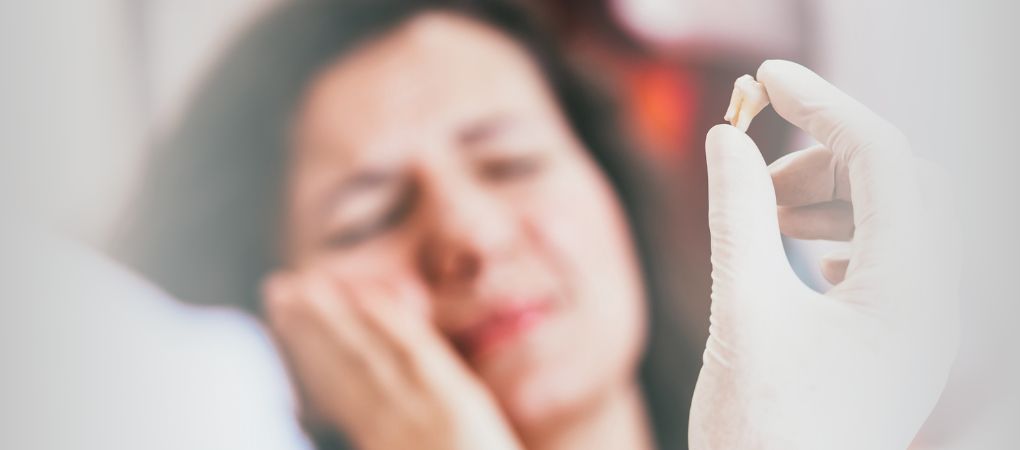Francesca Galiano
|
16/08/2022 - Last update 29/12/2022
Patricia M Meyer, Sharon M Gustowski | Year 2012
Osteopathic manipulative treatment to resolve head and neck pain after tooth extraction
Pathology:
Cervicalgia (cervical pain and stiff neck)
Type of study:
Case report
Date of publication of the study’:
2012/Jul/02

Purpose of the study
- Objective: to report the usefulness of OMT in treating head and neck pain occurred after a tooth extraction
- Measured outcomes: report of the symptoms
Participants
- Number: 1
- Description: 52-year-old man, working as a seller of spare parts for trucks, with neck pain, headache and low back pain started 2 weeks before the first visit, just after the extraction of a tooth of the upper right arch and after straining too much (and having overextended his neck) by pushing a car. The pain was described as pins and needles in the neck, sensations that would then expand to the head, without producing any dizziness. The pain would improve with hot showers and aspirin, but would worsen with movement. The low back pain was associated with stiffness and tension, but there was no weakness, paresthesia or incontinence (either urinary or intestinal).
At the time of the visit, he was taking lisinopril for hypertension, paroxetine for depression and a multivitamin. The clinical history showed hypertension and depression, besides low back pain, already treated with OMT. The patient also suffered eye pain and a feeling of blockage in his left ear. Otherwise the vital signs remained normal as well as the neurological, pulmonary, cardiovascular, and head, eyes, ears, nose and throat examinations.
The musculoskeletal examination showed a sore cervical paraspinal musculature and tense low thoracic and low back muscles, but with unaltered range of motion (ROM). For these reasons, the doctor had diagnosed a simple muscular strain to be treated with paracetamol when needed, metaxalone, ROM exercises and limitations on lifted load. Although he recommended a follow-up visit after 2 weeks and an OMT appointment, the patient did not show up for either visit.
Si è invece presentato dopo 2 mesi a causa della persistenza dei sintomi, con un dolore al collo che si irradiava fino in cima al capo (con intensità costante di 5 su 10), dietro gli occhi e giù nella parte posteriore del braccio destro. This pain would ease with physical exercises, hot showers and muscle relaxants, otherwise there was no weakness, numbness or tingling. However, the osteopathic evaluation showed a somatic cranial dysfunction, with a reduction in amplitude and frequency of the cranial rhythmic impulse on the right and with a restriction in the right occipitomastoid suture. Some somatic dysfunctions were also found at the cervical level, in addition to bilateral rib restrictions, and some dysfunctions at the level of the T6-T8 vertebrae. Finally, a sore spot was found at the bicipitefield-p.
Interventions and evaluations
- 2 sessions of OMT at a week distance to each other
- OMT: parietal and frontal lifts, as well as V-spread technique, at the cranial level; muscle energy, myofascial release, counterstrain and articulatory techniques for the cervical spine; high-velocity low-amplitude techniques for the thoracic spine; Still’s techniques for the ribs
Results
At the follow-up visit, 1 week after the OMT, the patient reported important improvements: the headache had resolved, the neck pain intensity was minimum and the right arm tenderness had also decreased. After a further OMT treatment, the symptoms resolved completely
Discussion
The extraction of a tooth can negatively affect the nearby structures, as it often involves the use of a mechanical force greater than those to which the body is accustomed at the buccal level. The consequences may entail different somatic dysfunctions and alterations in the myofascial organization of the cranial structures. In this regard, depending on the tooth extracted and on the force applied, it is possible to make a potential prediction of the somatic dysfunctions that will manifest considering the positioning and the status of the cranial sutures. Given the cranial innervation, it is then possible to expect the insurgence of pain or particular sensations by evaluating which nervous pathway can be traveled by the above mentioned dysfunctions.
Consequently, it becomes essential to carry out the most complete possible evaluation of the myofascial structures, starting from those main structures that can more easily be the place of dysfunctions, such as the occipitomastoid suture, the occipitoatlantal articulation and the temporal bones.
The review of Osteopedia
By Marco Chiera
Strengths: good discussion on how a tooth extraction could affect the rest of the myofascial and osseous structures, favoring dysfunctions and, therefore, pain.
Limits: as all case reports, it is not generalizable, furthermore, a follow-up on the long run is missing to check if the symptoms did not reappear. A description of the study limitations is also missing.

Are you an osteopath?
Register and enjoy the membership benefits. Create your public profile and publish your studies. It's free!
Register now
School or training institution?
Register and enjoy the membership benefits. Create your public profile and publish your studies. It's free!
Register now
Do you want to become an osteopath? Are you a student?
Register and enjoy the membership benefits. Create your public profile and publish your studies. It's free!
Register now







